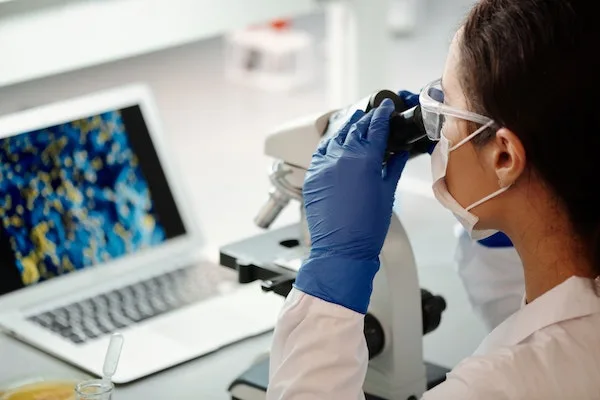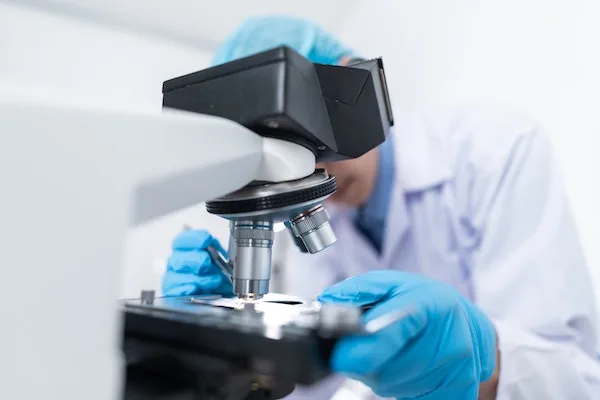6 Ways You Can Conduct Your Biochemical Research

 Biochemistry is an incredibly fascinating and complex field of study. It involves the study of the chemical processes that occur in living organisms, such as how cells use energy or how proteins are synthesized. For those interested in pursuing a career in biochemistry, understanding how to conduct research is key. It’s essential to know the different methods and techniques available for conducting biochemical research. Here are six ways you can conduct your biochemical research.
Biochemistry is an incredibly fascinating and complex field of study. It involves the study of the chemical processes that occur in living organisms, such as how cells use energy or how proteins are synthesized. For those interested in pursuing a career in biochemistry, understanding how to conduct research is key. It’s essential to know the different methods and techniques available for conducting biochemical research. Here are six ways you can conduct your biochemical research.
1. Aquire Biochemicals
Depending on the type of research you are doing, it may be necessary to purchase biochemicals or other reagents. Many online retailers offer a variety of products for use in biochemical experiments and research. Be sure to read labels carefully as some can be hazardous if not handled properly. For example, you can look at Venogen Bioactive Compounds for your biochemical needs. It’s important to purchase biochemicals from reliable sources as some chemicals are volatile or can be dangerous if handled improperly. If done properly, biochemicals can provide valuable insight into biochemical processes. While most chemicals are available commercially, some may need to be made in-house.
2. Spectroscopy
Spectroscopy is an incredibly important tool for biochemical research. It involves the use of light (or often other forms of radiation) to examine the chemical composition or structure of a sample. This can be used to identify unknown compounds, measure concentrations of components in a sample, and analyze interactions between molecules. Examples include techniques such as ultraviolet-visible spectroscopy, infrared spectroscopy, and nuclear magnetic resonance spectroscopy. These techniques provide important information about how a molecule is structured and how it interacts with its environment. Also, spectroscopy can be used to analyze mixtures of substances, giving valuable insight into the biochemical interactions occurring within them.
3. Chromatography
Chromatography is an analytical technique that utilizes mobile phases and stationary phases to separate mixtures of substances into their individual components. This process can be used to identify unknown compounds or to quantify known compounds in a mixture. It uses the relative solubility of the various components in each phase to achieve separation. The most common type of chromatography is High-Performance Liquid Chromatography (HPLC). This method utilizes high pressures on a small column packed with stationary phase particles and utilizes a liquid as the mobile phase, allowing for better resolution between different components when compared to gas chromatography.
4. Enzyme Kinetics
Enzyme kinetics can be used to study the behavior of enzymes under different conditions. This includes investigating how temperature, pH levels, and certain inhibitors affect enzymatic activity. Enzyme kinetics is a powerful tool for uncovering new mechanisms of action and understanding how cellular pathways are regulated. To conduct enzyme kinetic experiments, researchers typically use spectrophotometers or fluorimeters to measure changes in absorbance or fluorescence over time that result from enzymatic reactions. These measurements help scientists determine the rate at which substrates are converted into products.
5. Molecular Modeling
Molecular modeling is one of the most important techniques used by biochemical researchers. It involves creating three-dimensional models of molecules and their interactions in order to better understand complex biological processes. Molecular modeling can be used to study how drugs interact with proteins, for example, or to explain why certain genes are associated with particular diseases. Researchers use a variety of software programs to create these models; some programs are designed specifically for biochemistry research while others may be adapted from other disciplines such as chemistry or physics. The use of molecular modeling can provide invaluable insight into the workings of cellular processes, providing a more complete understanding than traditional laboratory experiments alone.
6. Bioinformatics
Bioinformatics is an interdisciplinary field that combines biology, computer science, and mathematics to analyze genetic and protein sequences. It can be used to identify patterns, make predictions, and develop new treatments for diseases. Bioinformatics can also help researchers understand the function of proteins in different organisms, especially in organisms with complex genomes. By using bioinformatics software, researchers can compare genetic data from different species to find similarities or differences among them. This information can then be used to develop hypotheses about how an organism might respond to a certain environment or stimulus. Additionally, bioinformatics tools are often used to create gene expression maps that highlight areas of active genes within a cell or tissue sample.
Biochemical research is an incredibly vast and important field. By understanding the different ways you can conduct your biochemical research, you’ll be well on your way to becoming a successful biochemist. From analytical reference standards to bioinformatics, there are numerous techniques available for conducting research in this fascinating field. With the right knowledge and tools, you can make groundbreaking discoveries in the laboratory and create solutions that might one day improve lives.





